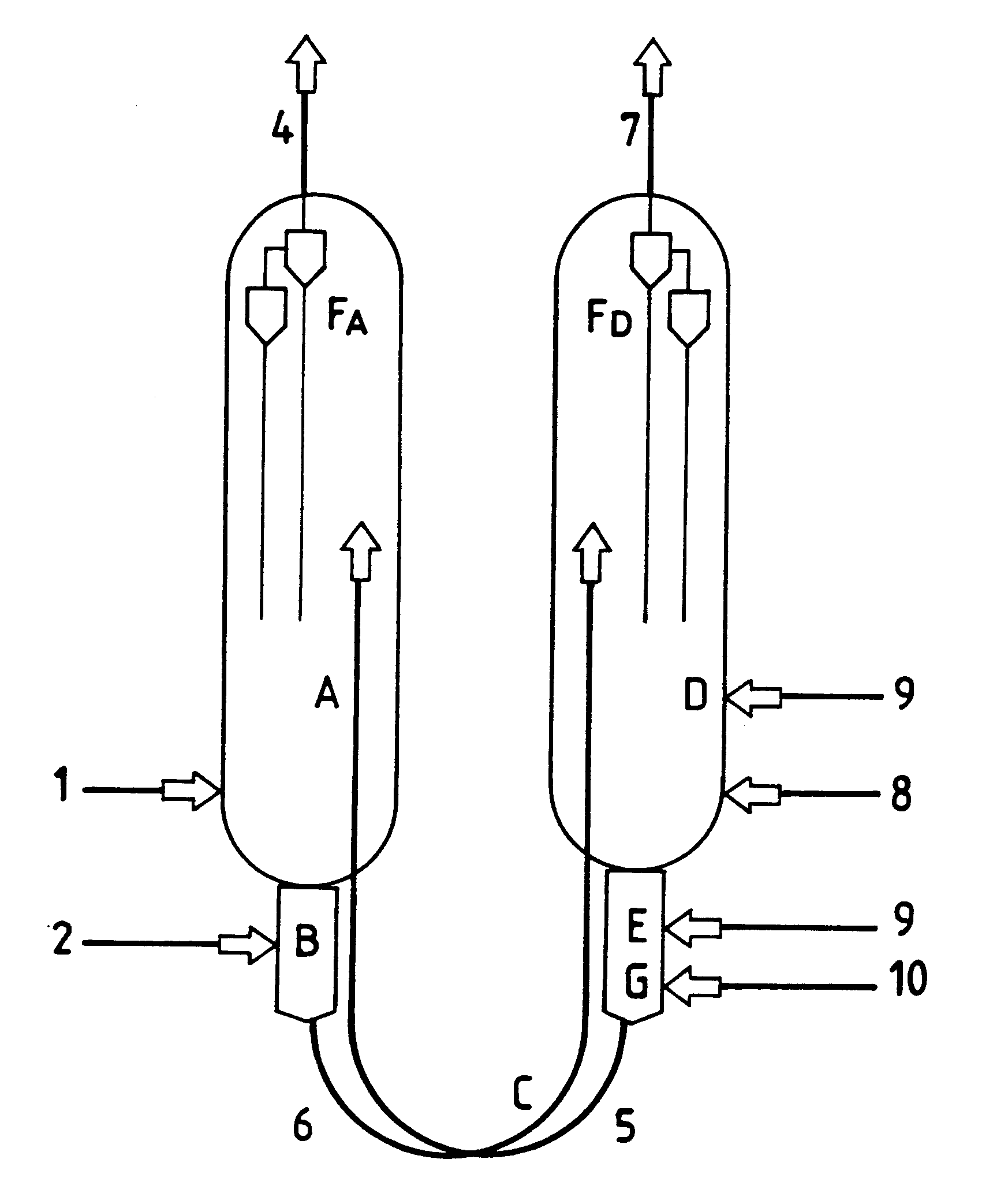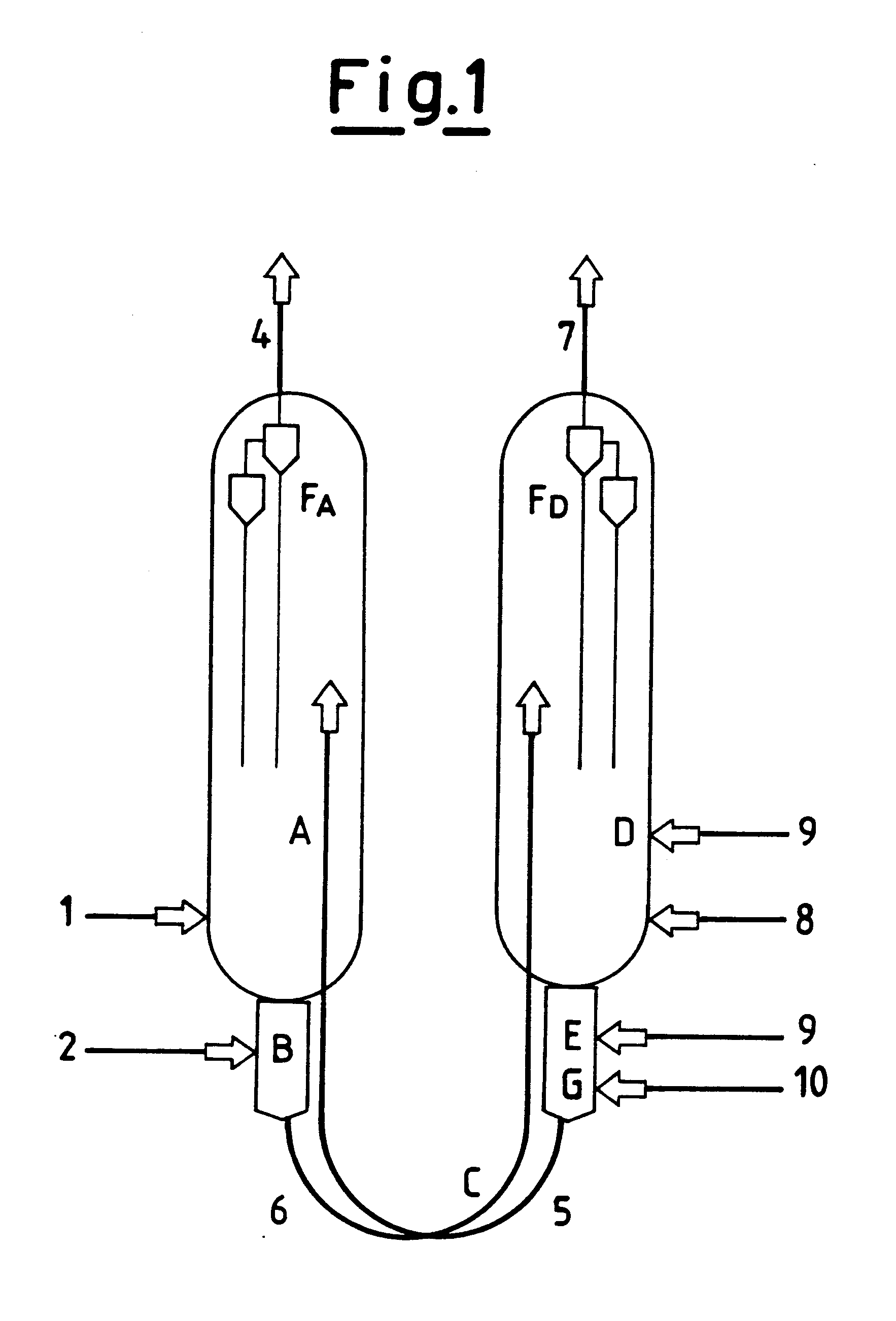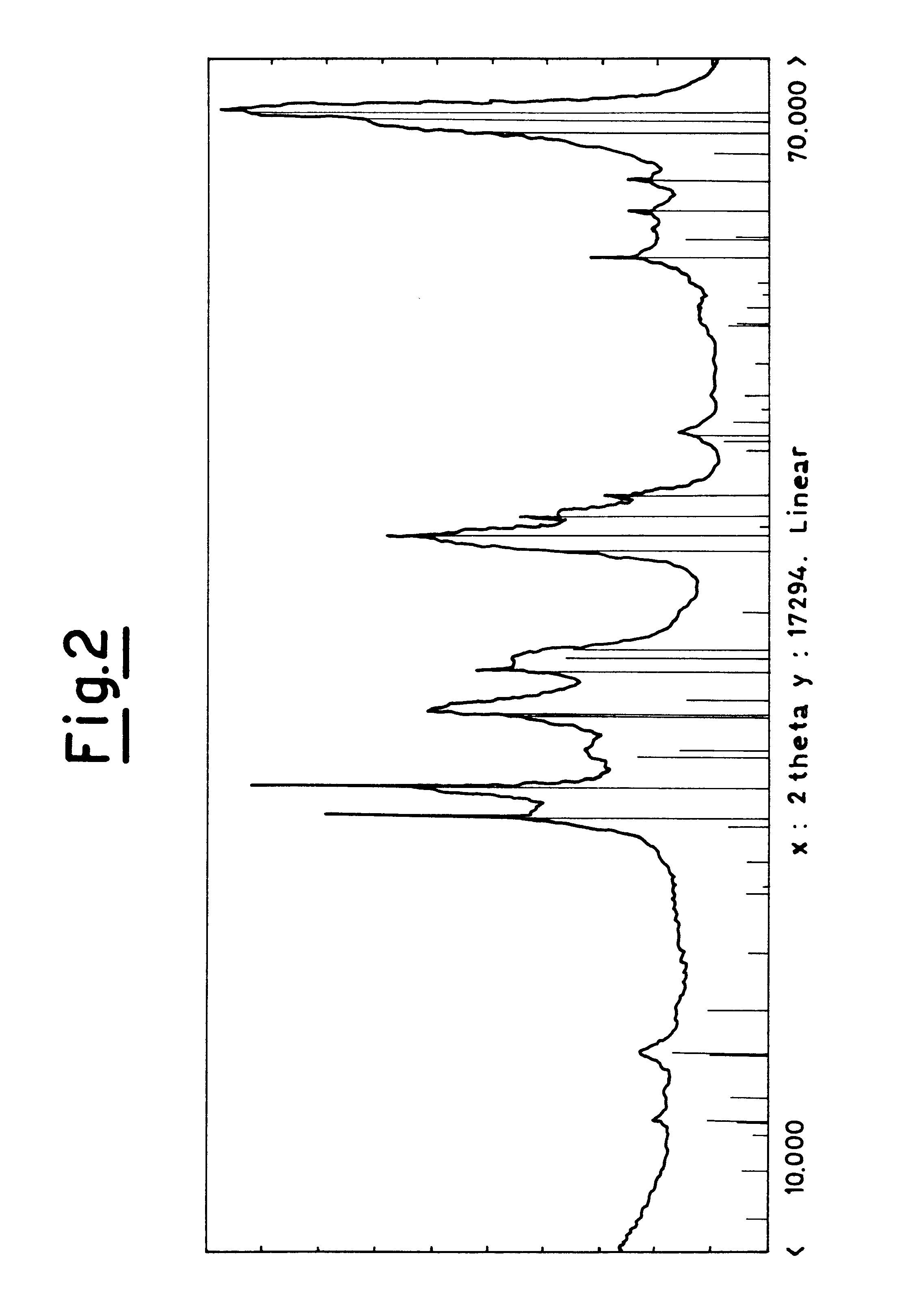Process for obtaining light olefins by the dehydrogenation of the corresponding paraffins
a technology of paraffins and light olefins, which is applied in the direction of hydrocarbon preparation catalysts, metal/metal-oxide/metal-hydroxide catalysts, physical/chemical process catalysts, etc., can solve the problems of low selectivity to olefins, limited expansion of industrial processes for their preparation, and high cos
- Summary
- Abstract
- Description
- Claims
- Application Information
AI Technical Summary
Problems solved by technology
Method used
Image
Examples
example 2
200 g of microspheroidal alumina, prepared as described in example 1, are impregnated according to the method described above with 68 cc of an aqueous solution containing: 68.3 g of CrO.sub.3 (99.8% w), 6.48 g of KOH (90% w) and 4.13 g of SnC.sub.2 O.sub.4 (99.9% w) in deionized water, maintained at the same temperature as example 1.
The impregnated product is treated as described in the above example to give a catalyst whose weight composition proves to be the following: 20% Cr.sub.2 O.sub.3, 1.89% K.sub.2 O, 0.9% SnO, 1.23% SiO.sub.2, Al.sub.2 O.sub.3 the complement to 100.
The catalytic performances in the dehydrogenation reaction of isobutane are shown in table 1.
example 3
200 g of microspheroidal alumina, prepared as described in example 1, are impregnated according to the method described above with 68 cc of an aqueous solution containing: 68.8 g of CrO.sub.3 (99.8% w), 6.52 g of KOH (90% w) and 5.61 g of SnC.sub.2 O.sub.4 (99.9% w) in deionized water, maintained at the same temperature as example 1.
The impregnated product is treated as described in the above example to give a catalyst having the following weight composition: 20% Cr.sub.2 O.sub.3, 1.89% K.sub.2 O, 1.4% SnO, 1.22% SiO.sub.2, Al.sub.2 O.sub.3 the complement to 100.
The catalytic performances in the dehydrogenation reaction of isobutane are shown in table 1.
example 4
200 g of microspheroidal alumina, prepared as described in example 1, are impregnated according to the method described above with 68 cc of an aqueous solution containing: 67.9 g of CrO.sub.3 (99.8% w), 6.44 g of KOH (90% w) and 1.78 g of SnC.sub.2 O.sub.4 (99.9% w) in deionized water, maintained at the same temperature as example 1.
The impregnated product is treated as described in the above example to give a catalyst with the following weight composition: 20% Cr.sub.2 O.sub.3, 1.89% K.sub.2 O, 0.45% SnO, 1.22% SiO.sub.2, Al.sub.2 O.sub.3 the complement to 100.
The catalytic performances in the dehydrogenation reaction of isobutane are shown in table 1.
PUM
| Property | Measurement | Unit |
|---|---|---|
| temperature | aaaaa | aaaaa |
| temperature | aaaaa | aaaaa |
| temperature | aaaaa | aaaaa |
Abstract
Description
Claims
Application Information
 Login to View More
Login to View More - R&D
- Intellectual Property
- Life Sciences
- Materials
- Tech Scout
- Unparalleled Data Quality
- Higher Quality Content
- 60% Fewer Hallucinations
Browse by: Latest US Patents, China's latest patents, Technical Efficacy Thesaurus, Application Domain, Technology Topic, Popular Technical Reports.
© 2025 PatSnap. All rights reserved.Legal|Privacy policy|Modern Slavery Act Transparency Statement|Sitemap|About US| Contact US: help@patsnap.com



